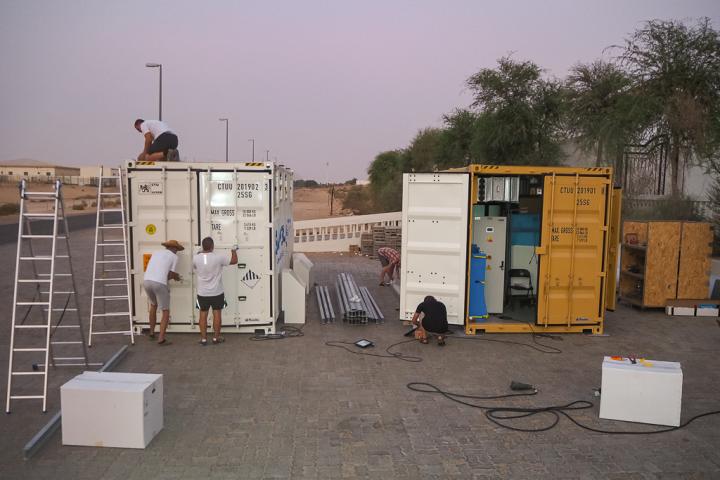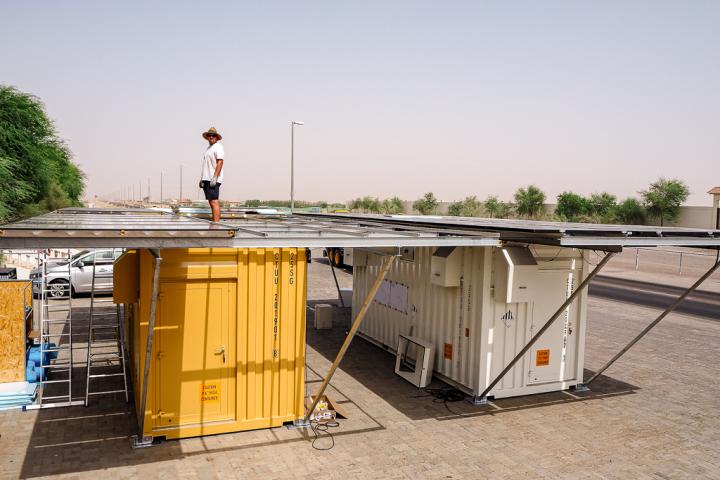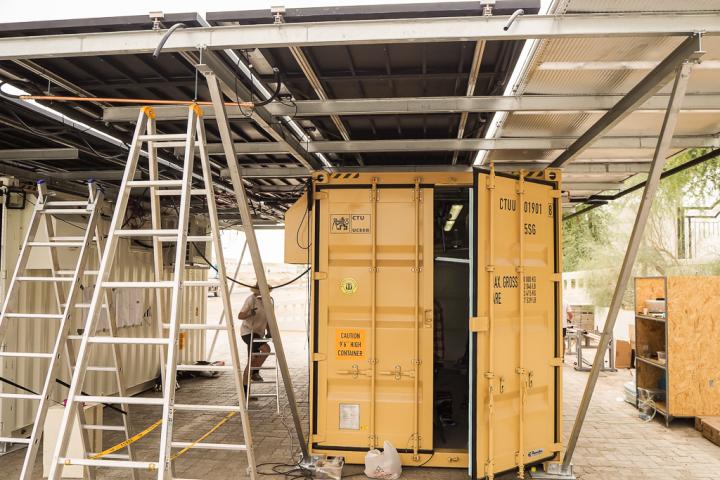
System testing will run in the Sweihan Desert in the UAE for about six months to provide data from both extreme summer and autumn and winter traffic. During this time, its creators, led by Tomáš Matuška, want to verify how S.A.W.E.R. (Solar-Air-Water-Earth-Resources) will withstand a real desert environment in which it will have to withstand high temperatures, fine sand and other adverse effects.
It is too early to make any conclusions about the durability and performance of the device after a few days of operation. Obtained water from the system can be used on a nearby camel farm, where Bedouins from the surrounding area come for it. The system could be of great help to them in the future, since it should be able to operate completely autonomously using only solar energy even in the most remote areas where there are no asphalt roads or power lines. However, it is not excluded that S.A.W.E.R. finds use elsewhere.
Among others, the web Novinky.cz also informed about the system



